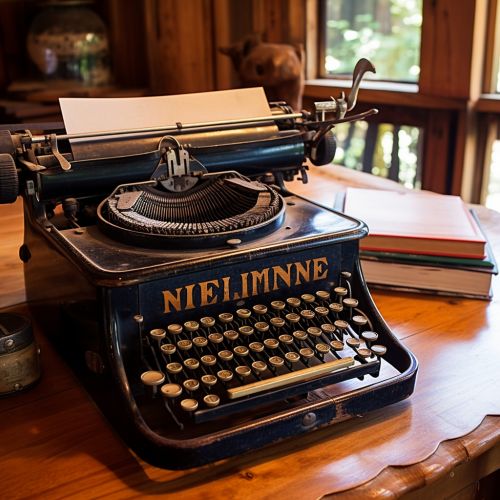Robert A. Heinlein
Early Life
Robert Anson Heinlein was born on July 7, 1907, in Butler, Missouri. His parents, Rex Ivar Heinlein and Bam Lyle Heinlein, were both teachers. Heinlein had six siblings, four brothers and two sisters. His family moved to Kansas City, Missouri, when he was young, and he spent most of his childhood there.
Heinlein was an avid reader from a young age. He was particularly interested in science fiction, which was a relatively new genre at the time. He also had a strong interest in astronomy and physics, and he often incorporated these subjects into his later works.


Education
Heinlein attended Central High School in Kansas City, where he excelled in academics, particularly in mathematics and science. After graduating from high school, he attended the U.S. Naval Academy in Annapolis, Maryland, where he studied engineering. He graduated from the academy in 1929, ranking fifth in his class.
After graduation, Heinlein served in the U.S. Navy as an officer. He was stationed on several ships, including the USS Lexington and the USS Roper. During his time in the navy, Heinlein developed a strong interest in naval architecture, which would later influence his science fiction writing.
Writing Career
Heinlein began his writing career in the late 1930s. His first published story, "Life-Line," was published in Astounding Science Fiction magazine in 1939. This story, along with many of his early works, was characterized by its hard science fiction elements and its focus on technological and scientific accuracy.
Heinlein's early works were primarily short stories and novellas, many of which were published in science fiction magazines. In the 1940s, he began writing novels, including "Rocket Ship Galileo," "Space Cadet," and "Red Planet." These novels, often referred to as his "juveniles," were targeted at young readers and were notable for their realistic portrayal of space travel and their emphasis on scientific accuracy.
In the 1950s and 1960s, Heinlein's work became more philosophical and political. His novels from this period, including "Starship Troopers," "Stranger in a Strange Land," and "The Moon is a Harsh Mistress," are considered some of his best works. These novels often explored complex social and political themes, including individualism, libertarianism, and the nature of freedom.


Later Life and Death
In his later years, Heinlein continued to write and publish novels, although his health began to decline. He suffered from several health problems, including peritonitis and a blocked carotid artery. Despite these health issues, he continued to write until his death.
Heinlein died on May 8, 1988, in Carmel, California. His ashes were scattered in the Pacific Ocean.
Legacy
Heinlein is considered one of the most influential science fiction writers of the 20th century. His work has had a significant impact on the science fiction genre, and he is often cited as a major influence by other science fiction writers. His novels have won several awards, including four Hugo Awards, and he was the first science fiction writer to receive the Grand Master Award from the Science Fiction and Fantasy Writers of America.
